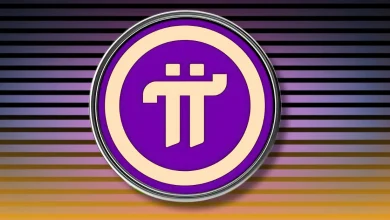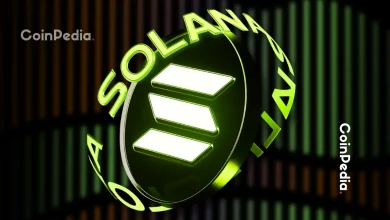
Over 9,120 AI apps created with Pi's no-code App Studio; 30+ already live on mainnet, spanning gaming, social, and service platforms.
Pi Network introduces Ecosystem Directory Staking, letting users boost favorite apps’ visibility by staking Pi tokens—no extra rewards offered.
Pi Network is booming! At the Pi2Day 2025 event, the team unveiled a breakthrough: over 9,120 AI-generated apps were built using its no-code App Studio. With at least 30 apps already live on the mainnet, Pi Network is rapidly evolving into one of the most vibrant ecosystems in Web3.
13.7M Pi Users On Mainnet
As of now, 13.7 million Pi users have completed KYC and migrated to the mainnet, actively using Pi-powered applications. This massive user base is fueling the growth of Pi’s ecosystem.
Top AI Apps Live on the Pi Network Mainnet
Here are some of the standout apps already running on the Pi mainnet:
- Map of Pi – A marketplace where users can buy and sell real-world services using Pi, displayed on an interactive map.
- Fruity Pi – A fun, fruit-merging game that integrates Pi for gaming rewards.
- CARE FOR PI – A community-driven app likely aimed at charitable and support-based services.
- Link for Pi – A social networking app designed for Pi users to connect and collaborate.
- LatinChain Platform – A gaming and entertainment platform that supports in-game purchases with Pi. It was also a Pi Hackathon winner.
These apps demonstrate the utility of Pi in various sectors — from e-commerce to gaming and social networking.
Is There a Limit to App Submissions?
Crypto commentator Dr. Altcoin recently suggested there may be a limit of 8,430 apps accepted into the App Studio. This sparked concerns among developers, but so far, no official confirmation has been provided by the Pi Core Team.
Still, the concern raises valid questions about scalability and how the platform will manage the influx of new apps.
What Is Ecosystem Directory Staking?
Another key update from the event is the Ecosystem Directory Staking model. Users can stake Pi tokens to boost their favorite apps’ visibility in the Pi App Store.
- No extra Pi rewards are given for staking.
- Developers can offer custom incentives to attract stakers.
This approach gives users a say in shaping the app ecosystem while rewarding innovation and real utility.
Final Thoughts: Can Pi Network Handle the Growth?
With thousands of AI-generated apps and millions of verified users, Pi Network is entering a critical growth phase. While it’s creating exciting opportunities, questions about platform limits and infrastructure readiness remain.But one thing is clear — Pi Network is no longer just a test project. It’s building a live, AI-powered app ecosystem, and all eyes are now on how it scales.
Never Miss a Beat in the Crypto World!
Stay ahead with breaking news, expert analysis, and real-time updates on the latest trends in Bitcoin, altcoins, DeFi, NFTs, and more.
FAQs
Yes, many analysts believe Pi Network has a strong future due to its massive and engaged community (13.7M mainnet users), a rapidly expanding ecosystem with thousands of AI-generated apps, and a “utility-driven” approach to Web3. Its recent advancements in app development and staking show significant progress beyond just a test project.
Some conservative forecasts place it between $0.40 and $0.80, while more optimistic scenarios suggest it could reach an average of $2.30 to $6.70. Extremely bullish projections, contingent on major developments like full exchange listings, even mention possibilities of $240 or more if adoption explodes.
Long-term forecasts for Pi in 2030 show significant potential, but also wide ranges. Some conservative predictions are around $0.58 to $2.81. However, more ambitious forecasts, factoring in global adoption and strong utility, suggest Pi could reach between $200 and $1,150 if it integrates into mainstream financial systems and achieves widespread use.
Trust with CoinPedia:
CoinPedia has been delivering accurate and timely cryptocurrency and blockchain updates since 2017. All content is created by our expert panel of analysts and journalists, following strict Editorial Guidelines based on E-E-A-T (Experience, Expertise, Authoritativeness, Trustworthiness). Every article is fact-checked against reputable sources to ensure accuracy, transparency, and reliability. Our review policy guarantees unbiased evaluations when recommending exchanges, platforms, or tools. We strive to provide timely updates about everything crypto & blockchain, right from startups to industry majors.
Investment Disclaimer:
All opinions and insights shared represent the author's own views on current market conditions. Please do your own research before making investment decisions. Neither the writer nor the publication assumes responsibility for your financial choices.
Sponsored and Advertisements:
Sponsored content and affiliate links may appear on our site. Advertisements are marked clearly, and our editorial content remains entirely independent from our ad partners.







